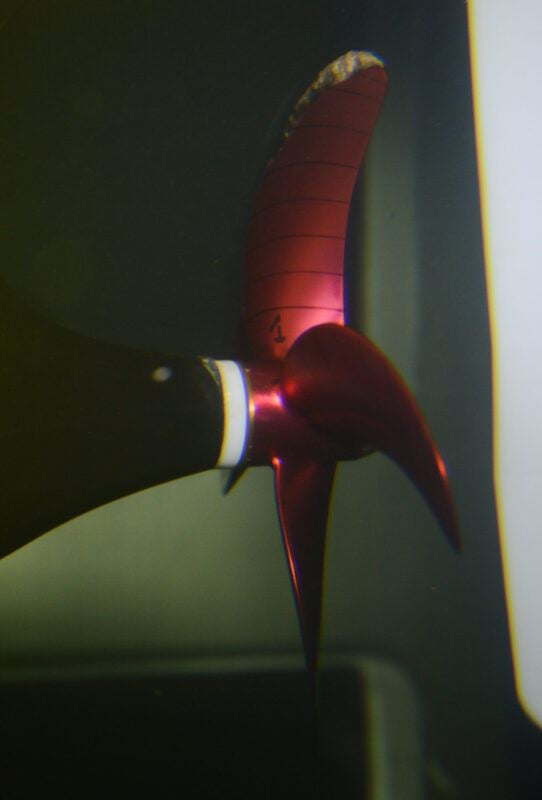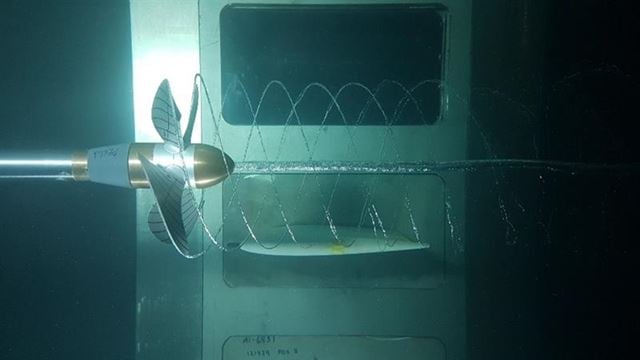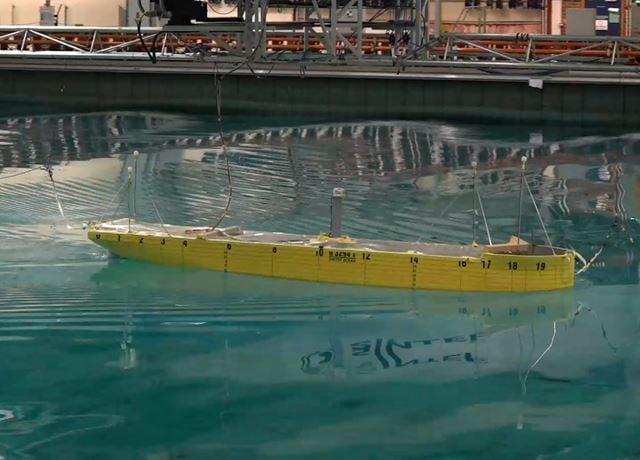Now, researchers will test how it behaves at sea using four small models at SINTEF’s basin in Trondheim. To the untrained eye, it may seem odd to see models between five- and seven-meters long can accurately predict how a 333-meter-long ship will behave in open waters.
The ship, which will transport iron ore from Brazil to China, may require over five kilometers to stop and 1.6 kilometers to turn.
These are dimensions so vast they almost seem unreal. But large ships on vast oceans can operate with such figures. They also need tugboats to assist when approaching land to dock or depart.
Here you can see a clip from the control tests:
“According to IMO criteria the ship stopping length should not exceed 15 ship lengths and tactical turning diameter should not exceed five ship lengths,” says project manager at SINTEF Ocean, Toralf Sundin Hamstad.
Before the ship (Very Large Ore Carrier, VLOC) can be built, SINTEF Ocean in Trondheim must test how it handles different wave heights and directions, and how the propeller interacts with the hull.
Extensive testing and multiple models
Four different models are used during testing. In calm water, the hull is tested to determine hull resistance. This determines the size of the engine and propeller the ship will need.
The propeller has a diameter of 10.8 meters. A three-story house is typically around nine to ten meters tall, so we’re talking about massive dimensions,” says Hamstad.

This propeller is about the size of a house. Photo: SINTEF
Through propulsion tests, it’s possible to determine how much fuel the vessel will need, while seakeeping tests show how the ship moves and behaves in various sea conditions. A ship is exposed to different wave directions and heights, and it’s important to test the model in realistic sea states.
Examines global wave statistics
Hamstad and his colleagues use a special map to determine wave direction and size. The world’s oceans are divided into regions, and from the map, researchers can find wave statistics for each area. Based on this information, Hamstad can decide which wave heights the vessel should be exposed to during testing.
In the Cavitation tunnel, the propeller and hull are tested. Cavitation is when the pressure on the propeller blade becomes so low that the water starts to boil or form bubbles. It damages the propeller.

Propellertest in the cavitation tunnel. Photo: SINTEF
“We have just under 2,000 stock propellers that we use in our experiments”, says Hamstad.
Small models, big numbers
A total of four different hull models are needed to give researchers answers about the ship’s characteristics at sea. SINTEF can test large ships using small models because they scale down time, speed, and forces.
“It’s challenging and exciting to work with some of the world’s largest ships. A small hull modification and optimization can have a big impact on fuel consumption,” says Hamstad.
An international collaboration
CSDC, China Ship Design & Research Center Co., is one of the world’s largest ship design firms. They speak very highly of their collaboration with SINTEF.

The tests answer whether or not the vessel fullfills the IMO criteria. IMO stands for International Maritime Organization. Photo: SINTEF
“SINTEF’s tests help us optimize our designs, ensuring safety, efficiency, and environmental compliance in our large vessel projects,” says Zhang Jinliang from the R&D department in CSDC.
The shipowner in Brazil plan to build 10 ships like this. When the tests in Norway are done, the building process in China starts.


